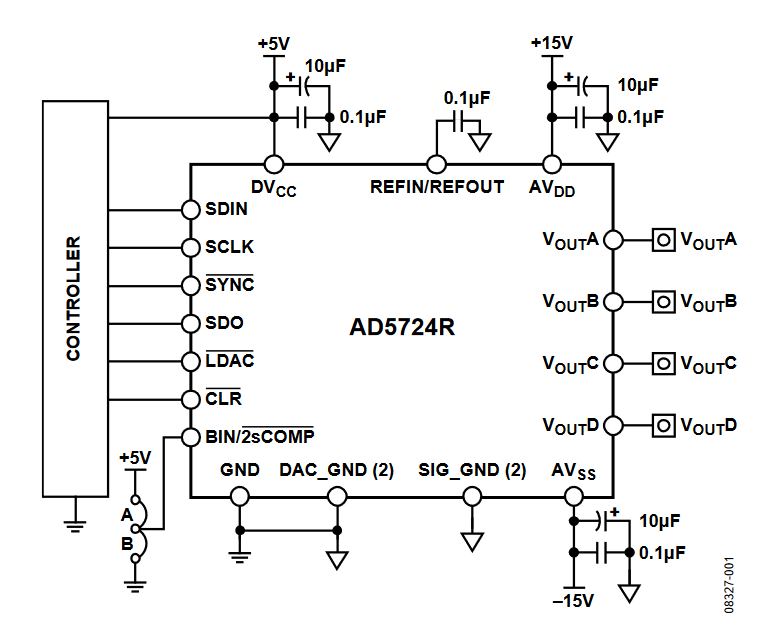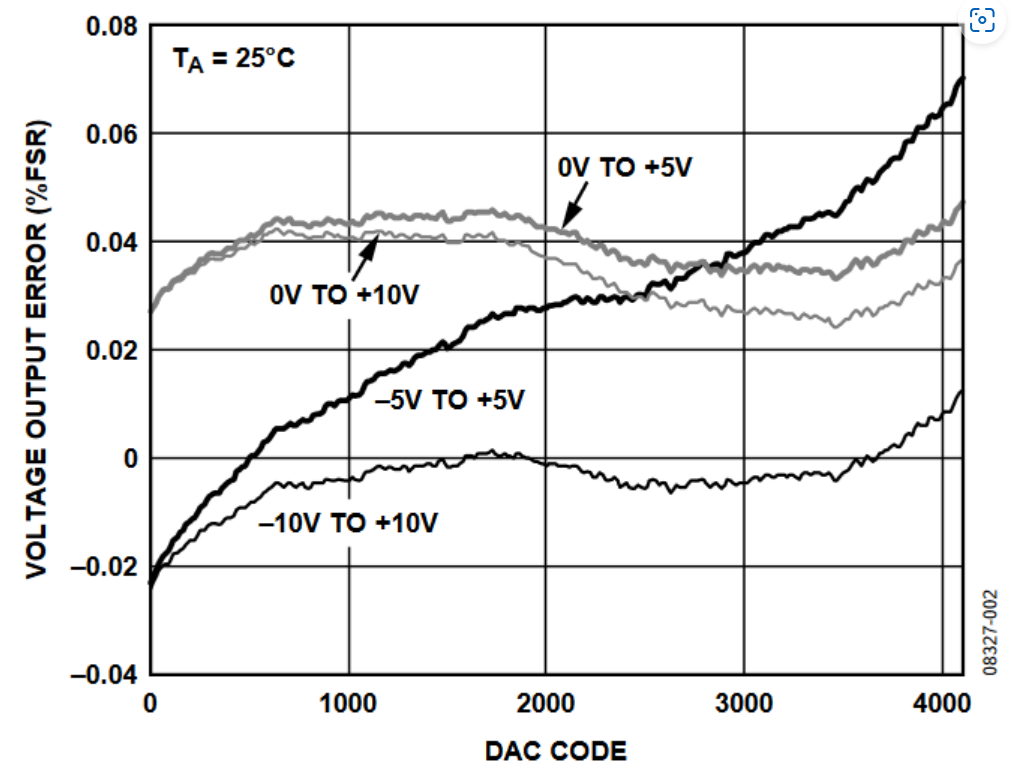AN-1245: Software Configurable 12-Bit Quad Channel Unipolar/Bipolar Voltage Output Using the AD5724R DAC
Circuit Function And Benefits
This circuit provides unipolar and bipolar data conversion using the AD5724R, a quad, 12-bit, serial input, unipolar/bipolar voltage output DAC. The only external components needed for this 12-bit DAC are decoupling capacitors on the supply pins and reference input, leading to savings in cost and board space. This circuit is well suited for closed-loop servo control applications.
Circuit Description
The AD5724R is a digital-to-analog converter (DAC) that offers guaranteed 12-bit monotonicity, integral nonlinearity (INL) of ±0.5 LSB, 0.1% total unadjusted error (TUE), and 10 μs settling time. The AD5724R also integrates a 2.5 V, 5 ppm/°C voltage reference, reference buffers, and output amplifiers, which provide further savings in both cost and board space. Performance is guaranteed over the following supply voltage ranges: AVDD supply range from +4.5 V to +16.5 V, and AVSS supply range from −4.5 V to −16.5 V. The AVSS supply can be connected to 0 V if only unipolar outputs are required. The output range can be individually programmed for each of the four output channels. The options are 0 V to +5 V, 0 V to +0 V, 0 V to +10.8 V, −5 V to +5 V, −10 V to +10 V, and−10.8 V to +10.8 V. The input coding is user selectable twos complement or offset binary for a bipolar output (depending on the state of the BIN/2sCOMP pin). Coding is straight binary for a unipolar output. Figure 2 shows that the typical output error of this circuit at 25°C ambient temperature is less than 0.07 %FSR.

Figure 1. Unipolar/Bipolar Configuration for the AD5724R DAC (Simplified Schematic).

Figure 2. Voltage Output Error.
The circuit must be constructed on a multilayer PC board with a large area ground plane. Proper layout, grounding, and decoupling techniques must be used to achieve optimum performance (see MT-031 Tutorial and MT-101 Tutorial).
参考电路
Kester, Walt. 2005. The Data Conversion Handbook, Chapter 3 and Chapter 7. Analog Devices.
MT-015 Tutorial, Basic DAC Architectures II: Binary DACs. Analog Devices.
MT-031 Tutorial, Grounding Data Converters and Solving the Mystery of AGND and DGND. Analog Devices.